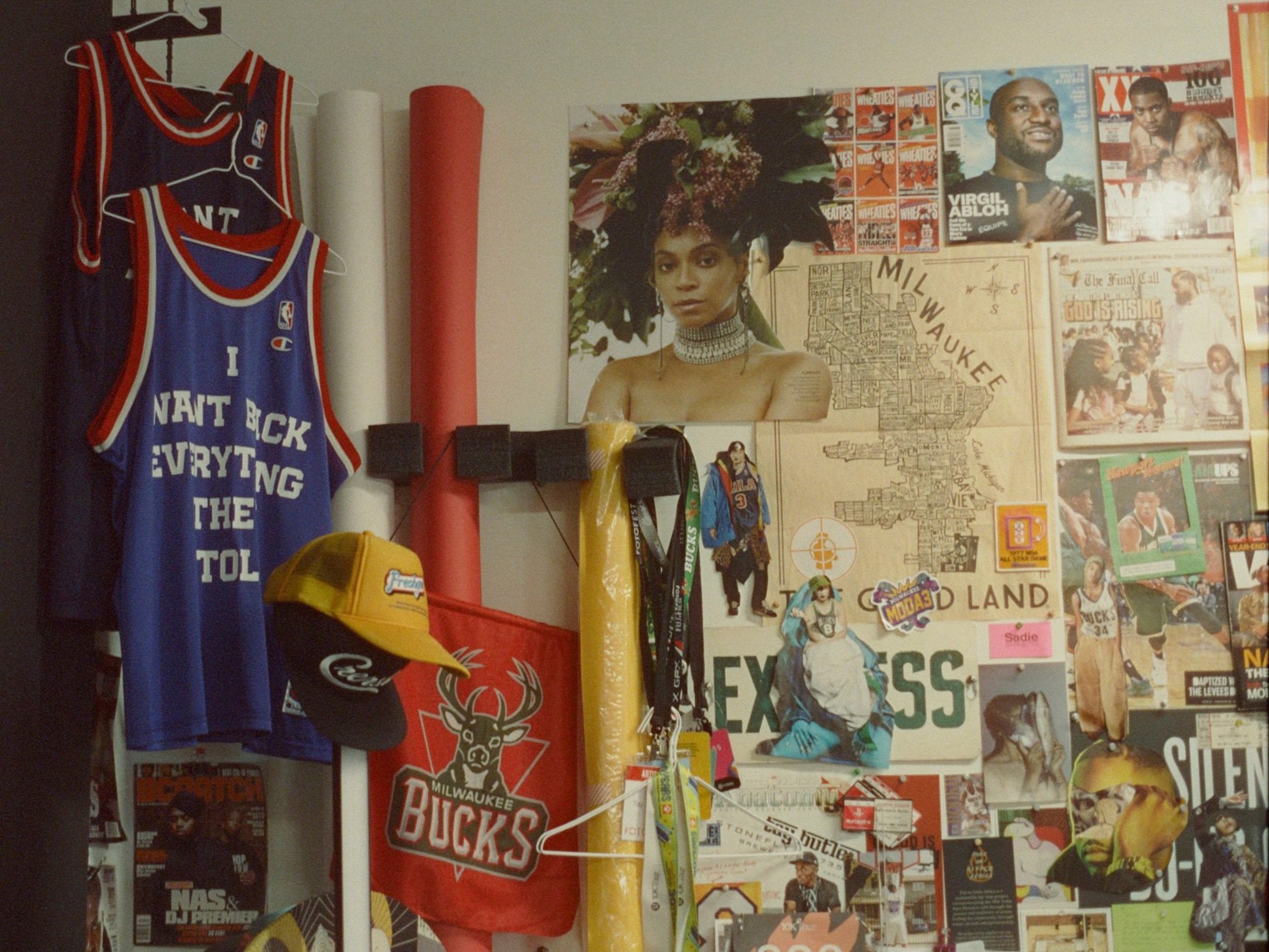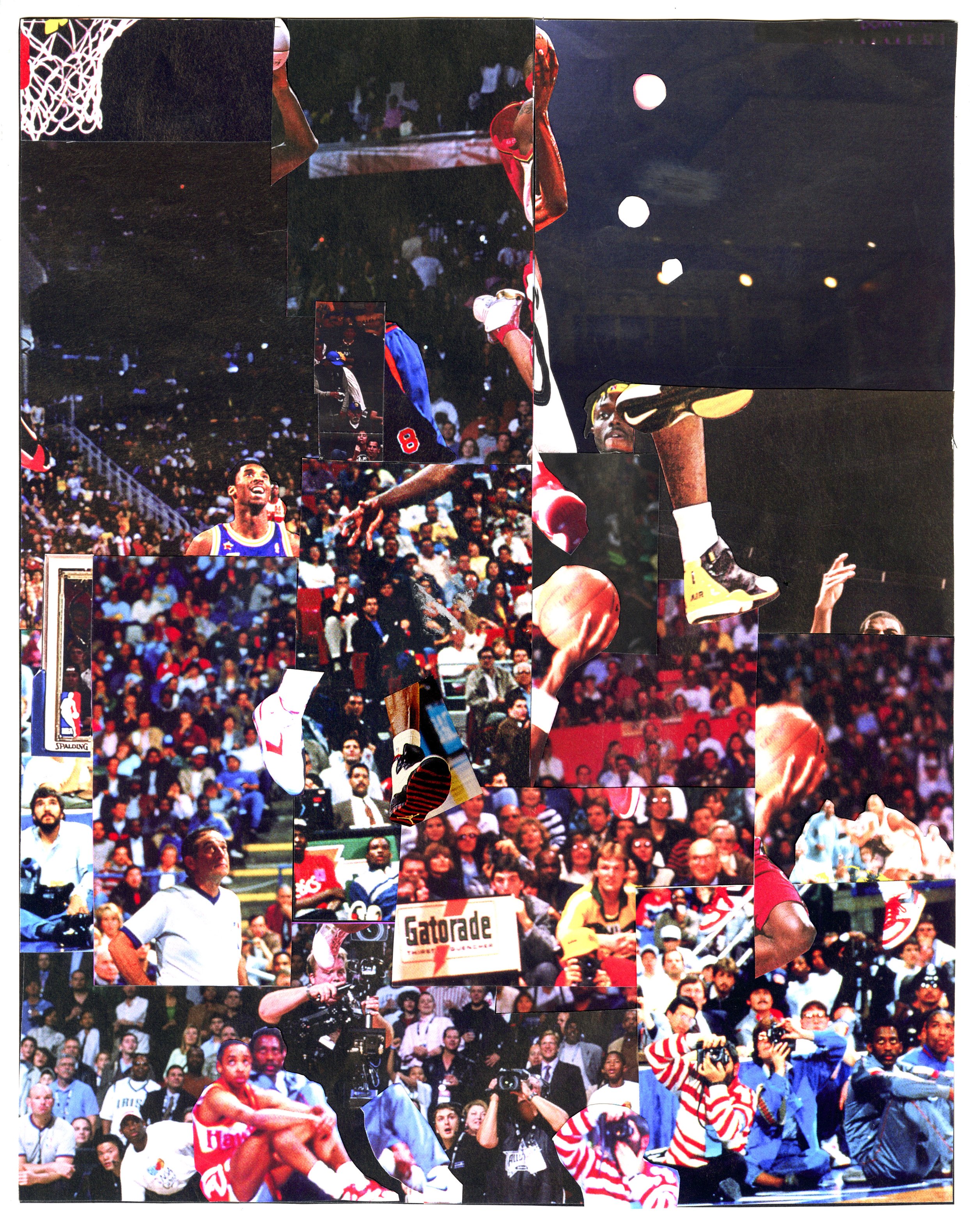On a Project Backboard job in Houston, Texas the team linked up with multi-disciplinary artist Tay Butler to talk collage and hang out in his studio. Part of the conversation focused on his “Hyperinvisibility” series. The video below is an excerpt from that discussion.
Butler’s studio feels like one big, ongoing art project as finished pieces bump up against works in progress. Clippings selected for aesthetic collide with collages overlapping with posters and other found ephemera that give glimpses into Butler’s identity. It’s like the bulletin board in Sgt. Rabin’s office in The Usual Suspects.
“It all has a system, Dave. It all makes sense when you look at it right. You gotta, like stand back from it, you know?”
The studio is in perpetual pursuit of exploring the history, the present, and the future of black people in America. Beyond his collage work, Butler has produced authentic jerseys with statements like “I want back everything they stole.” He’s the publisher of a zine series called Dress Code and his work has been commissioned for album covers. Through his multi-disciplinary practices, he is celebrating legacies. He’s envisioning better tomorrows as both an artist and an educator.
Hypervisibility is a term used by black academics at the University of Michigan to illustrate the pitfalls of tokenism in the work force. The experience is that a tokenized person is simultaneously invisible in their lack of belonging and hypervisible to scrutiny. If hypervisibility is “associated with heightened scrutiny and surveillance where failures are magnified and individuals lack control over how they are perceived by others,” (Settles, Buchanan, Dotson) then Butler’s “hyperinvisibility” collages of basketball players, fractured and cut from identification, further distorts the disingenuous gaze, so that the spectacle nearly erases the athlete’s agency.
The absence is striking. Butler’s decision to reorient to the point of partial omission keeps the audience, the organization (or institution represented by the referee) and the branding in full display. The athlete is reduced to insignificance, despite their awe-inspiring abilities. It speaks to a struggle that is perpetually at odds with the corporatization of art and sport: the artist and the athlete are paramount, and yet corporations go to great lengths to cut the artists and athletes out of the business, to reduce their share. If there’s any protest by the artist or athlete, the corporation will cut ties, if not blackball, with a confidence that says “I’ve got a million more that can replace you.” These issues arise in disputes over digital streaming for musicians, mural commissions for artists, and sponsorship deals for professional athletes.
Butler says the series was informed by a story he read about Black Republicans that focused on Charles Barkley. When he’s combing magazines for collage material it often results in discovering old articles that inform his work. The video below is Butler talking about this experience:
For Butler, the collage series is not purely indictment, but has revolutionized his mentality. Through the work, he has a proposal…



